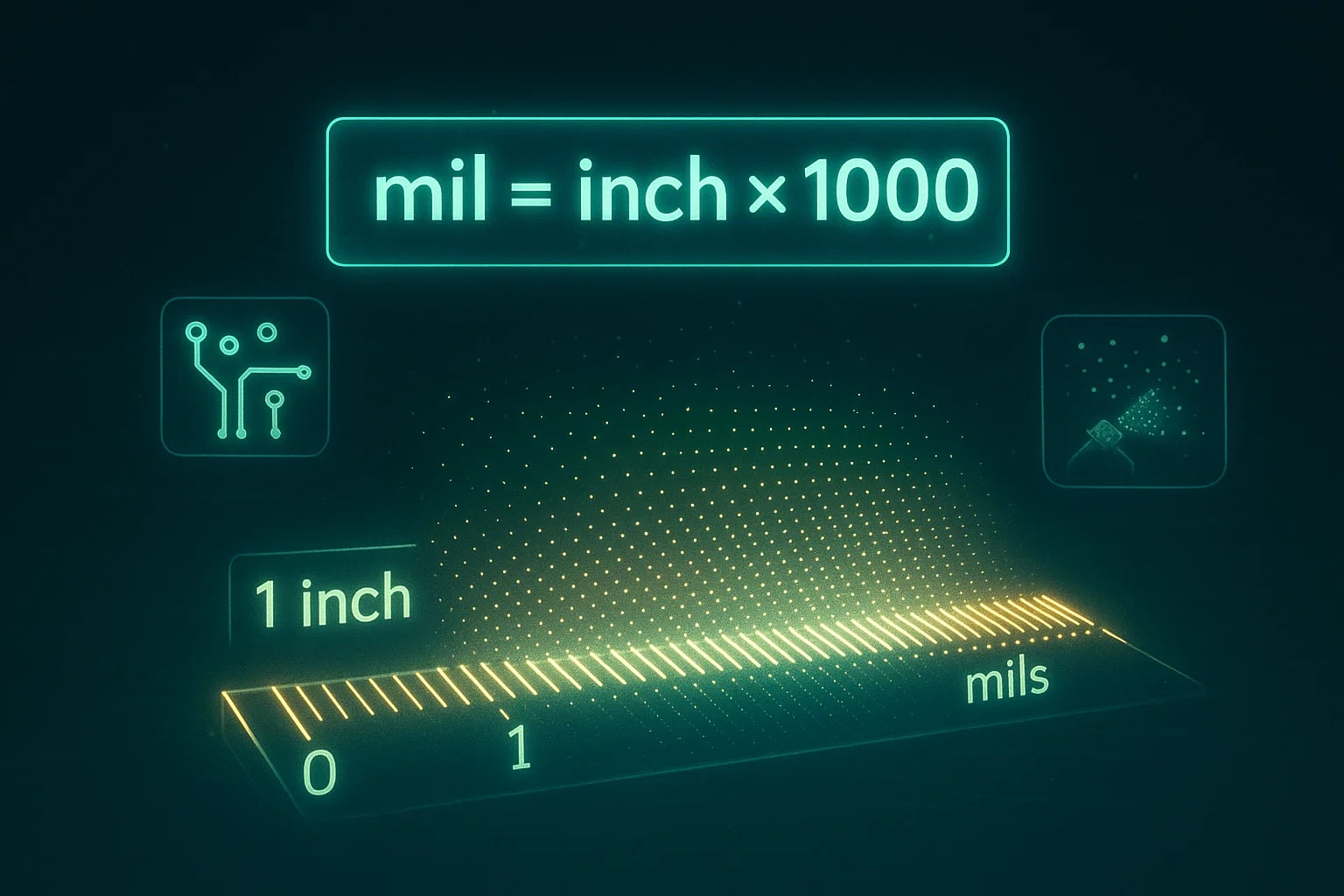inch to mil – How to convert in to mil
The conversion from inch to mil is widely used in engineering and manufacturing, particularly in fields requiring fine precision. While the inch is a common imperial unit, the mil—also called a thou—is used for small-scale measurements like circuit boards, wires, and coatings. Knowing how to convert in to mil helps bridge everyday imperial dimensions with detailed technical requirements.

What is an Inch (in)?
An inch is equal to 1/12 of a foot or exactly 25.4 millimeters. It is commonly used in construction, personal height, and technical specifications across imperial-based systems.
What is a Mil?
A mil (or thou) equals one thousandth of an inch:
1 mil = 0.001 in.
It is often used in printed circuit board (PCB) design, sheet metal thickness, and coating applications where very fine details matter.
How to Convert in to mil
The formula is:
mil = inch × 1000
For example, let’s convert 2.5 in into mils:
mil = 2.5 × 1000 = 2500 mil
So, 2.5 in = 2500 mil.
For more related calculations, try the Length Converter or explore other options in the Conversion Tools.
Do you know?
-
The mil is especially popular in the U.S. electronics industry, where PCB trace widths and drill sizes are often specified in mils.
-
A typical sheet of plastic wrap has a thickness of about 0.5–1 mil.
-
The inch was standardized internationally in 1959, fixing its relationship to the millimeter and allowing consistent conversions.
-
Industrial coating thickness, such as paint or protective layers, is frequently expressed in mils to ensure durability.
Precision in Practice
Mils play a critical role in modern technology. In PCB design, a trace width of 10 mil equals 0.010 inches, about 0.254 millimeters. Engineers often move between inches and mils to specify designs with clarity.
Similarly, in industrial coatings, thicknesses in mils are easier to communicate than decimals of an inch. For example, a 5-mil protective paint layer translates to 0.005 inches, ensuring consistency in safety and performance.

A Thousand Steps of Accuracy
The conversion from inch to mil reflects how one unit can be subdivided for high precision. Inches cover broader scales, while mils let engineers, manufacturers, and designers communicate exact details.
By applying this straightforward formula, you can switch between large and small imperial units with ease, supporting both practical and technical tasks.

